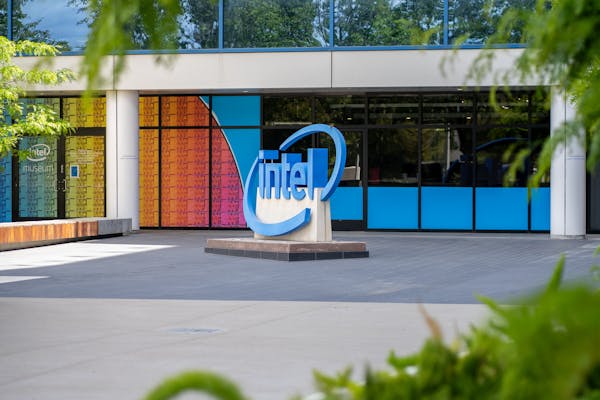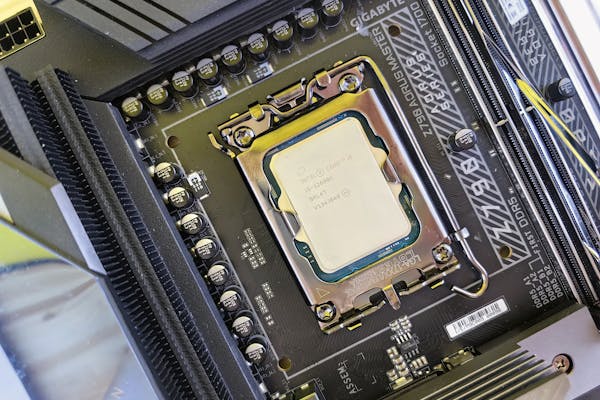Intel has long been at the forefront of processor innovation, continually pushing the envelope in both consumer and enterprise computing. With the release of their 14th Gen processors, they aim to set another benchmark in performance, efficiency, and technological advancement. This article explores the latest Intel processor series in detail, covering its architecture, features, performance benchmarks, and applications, while also comparing it to previous generations and competitor products.

Evolution of Intel Processors
Before diving into the specifics of Intel’s 14th Gen processors, it’s essential to look back at how far Intel has come. Over the years, Intel’s Core series has dominated the desktop and laptop markets, starting with the launch of its revolutionary Core architecture in 2006. Every new generation since then has seen incremental improvements in performance, efficiency, and features.
The transition from the 13th Gen to the latest Intel processor, the 14th Gen series, marks yet another step in Intel’s quest to maintain its dominance in the processor landscape. This generation offers significant advancements in core architecture, power efficiency, AI integration, and enhanced gaming capabilities, all while retaining backward compatibility with previous hardware setups.
Architectural Overview of Intel 14th Gen Processors
The latest Intel processor series is built on Intel’s updated architecture, which emphasizes improvements in core count, power efficiency, and artificial intelligence (AI) processing. The architectural shift in Intel’s 14th Gen processors introduces hybrid performance cores and efficiency cores, which optimally balance power consumption and processing capabilities.
Performance and Efficiency Cores
Intel has doubled down on its hybrid architecture, first introduced with its Alder Lake series. This design incorporates two distinct types of cores:
- Performance Cores (P-Cores): Optimized for high-performance tasks such as gaming, rendering, and heavy multitasking. These cores handle computationally intensive operations and excel in single-threaded applications.
- Efficiency Cores (E-Cores): These are designed for background tasks and low-power operations, making them ideal for improving energy efficiency without sacrificing performance. They enable better multitasking by taking on less demanding tasks, freeing up the P-Cores for more intensive work.
The combination of these two core types enables the 14th Gen processors to provide exceptional performance without the power drain typically associated with high-end chips. This hybrid approach is a response to the growing demand for processors that can excel in both high-performance and energy-efficient scenarios.
Intel 4 Process Node
The 14th Gen series is manufactured on the Intel 4 process node, which is a significant improvement over the 7nm process used in previous generations. The Intel 4 node allows for greater transistor density, meaning more transistors can fit into the same space. This results in better performance per watt, allowing Intel to pack more power into the latest Intel processors without increasing energy consumption.
The Intel 4 process node is also one of the first to take full advantage of Extreme Ultraviolet (EUV) lithography, a cutting-edge technology that makes it easier to fabricate the tiny features needed for modern processors. This improvement in manufacturing allows for better yields, fewer defects, and overall increased performance.
AI and Machine Learning Integration
One of the standout features of Intel’s 14th Gen processors is the deep integration of AI and machine learning capabilities. These features allow for more intelligent workload distribution and resource management, ultimately leading to faster and more efficient computing experiences.
Intel’s AI engine is built into the processor, allowing it to handle tasks like real-time language translation, image recognition, and enhanced predictive modeling. This technology is not just beneficial for consumers; it opens up new possibilities for businesses and developers working in fields such as big data, machine learning, and artificial intelligence development.
Enhanced Cache and Memory Support
Another significant enhancement in Intel’s latest processor series is the expanded cache memory and support for faster memory interfaces. Intel’s 14th Gen chips feature up to 30MB of Intel Smart Cache, ensuring faster access to frequently used data. This increase in cache size is particularly beneficial for gaming and professional applications like 3D rendering or video editing, where quick data retrieval is critical.
In terms of memory, Intel’s 14th Gen processors support DDR5 RAM, which delivers substantially higher data transfer rates compared to DDR4. DDR5 support is one of the most crucial aspects of the new generation, allowing users to take advantage of the latest high-speed memory modules, which can reach data rates of up to 6,400 MT/s (Mega Transfers per second) or more.
The support for PCIe 5.0 is also a game-changer, providing significantly more bandwidth for high-end graphics cards, storage devices, and other peripherals. This helps ensure that the latest Intel processor series is future-proof and capable of handling the next generation of GPUs and SSDs.
How Does the Latest Intel Processor Stack Up?

The performance improvements of Intel’s 14th Gen processors are nothing short of remarkable. Across various benchmarks, these processors showcase significant gains in both single-core and multi-core performance compared to their 13th Gen counterparts.
Single-Core Performance
Single-core performance is still a critical metric for many applications, especially for gaming, where higher clock speeds and better instruction per cycle (IPC) efficiency play pivotal roles. In most tests, the 14th Gen processors show up to a 15-20% improvement in single-core performance over Intel’s 13th Gen processors.
This improvement is primarily due to the architectural changes and the increased clock speeds. Some models in the 14th Gen series can turbo boost to up to 6.0 GHz, making them the highest-clocked consumer CPUs available. This is excellent news for gamers, as it translates to better frame rates and smoother performance in CPU-bound games.
Multi-Core Performance
When it comes to multi-core performance, the story gets even more exciting. With the latest Intel processor, Intel has managed to pack even more cores into its flagship models. For instance, the Intel Core i9-14900K features a combination of 8 P-Cores and 16 E-Cores, providing a total of 24 cores and 32 threads. This architecture allows the processor to handle heavily multithreaded workloads such as video editing, 3D rendering, and software compilation with ease.
In benchmarks involving multithreaded applications, the 14th Gen processors exhibit performance increases of up to 35% compared to the 13th Gen chips. The combination of more cores, better power management, and faster memory support makes the latest Intel processor a powerhouse for content creators, developers, and professionals who require heavy computational power.
Power Efficiency
Efficiency has become a critical factor in processor design, especially with increasing concerns over power consumption and thermal management in high-performance devices. Intel’s latest processors feature a much-improved power management system that dynamically allocates power between P-Cores and E-Cores, ensuring that the processor only uses the energy it needs.
The power efficiency gains are especially noticeable in mobile platforms, where Intel’s 14th Gen processors provide longer battery life and lower heat output without compromising performance. On desktop platforms, this efficiency allows for more consistent performance under sustained loads without hitting thermal throttling.
Intel’s 14th Gen Processor Lineup

As with previous generations, Intel’s 14th Gen series offers multiple tiers of processors, designed to cater to different market segments. The three main categories are:
- Intel Core i9: The flagship model, designed for enthusiasts, gamers, and content creators who demand the best performance. The i9 series offers the highest core counts, clock speeds, and cache sizes.
- Intel Core i7: Positioned as a high-performance alternative for power users and gamers, the i7 models balance performance and cost, making them ideal for demanding applications like gaming and creative work.
- Intel Core i5: The mainstream choice for most consumers, the i5 series provides an excellent balance between performance and affordability. These processors are perfect for everyday computing tasks, gaming, and light productivity work.
Let’s take a closer look at the flagship model in each category.
Intel Core i9-14900K
The Intel Core i9-14900K is the crown jewel of the 14th Gen lineup. With 24 cores (8 P-Cores and 16 E-Cores) and a max turbo frequency of 6.0 GHz, it is designed to deliver the ultimate performance for gaming, content creation, and professional workloads. The 14900K also features 36MB of L3 cache and supports DDR5-6400 memory, making it one of the most capable processors on the market.
Benchmarks show that the 14900K outperforms its predecessor, the i9-13900K, by around 25% in multi-threaded tasks and 15% in single-threaded tasks, making it the go-to choice for enthusiasts looking for uncompromising performance.
Intel Core i7-14700K
The i7-14700K offers a slightly more affordable option without sacrificing too much in the way of performance. With 20 cores (8 P-Cores and 12 E-Cores), a boost clock of 5.6 GHz, and support for DDR5 memory, the i7-14700K is perfect for high-end gaming and demanding productivity tasks.
In gaming benchmarks, the i7-14700K delivers frame rates that are comparable to the i9-14900K in most modern titles, making it an excellent choice for gamers who want top-tier performance at a lower price point.
Intel Core i5-14600K
For mainstream users, the i5-14600K offers excellent performance at a reasonable price. With 14 cores (6 P-Cores and 8 E-Cores) and a max turbo frequency of 5.4 GHz, it’s more than capable of handling modern games and everyday applications with ease.
In terms of value, the i5-14600K is hard to beat. It offers competitive performance in gaming, especially when paired with a high-end GPU, and is suitable for light to moderate content creation tasks.
How Does Intel 14th Gen Compare to AMD
No discussion of Intel’s latest processors would be complete without considering the competition. AMD’s Ryzen 7000 series, based on the Zen 4 architecture, offers stiff competition, particularly in multi-core performance and energy efficiency.
In single-core performance, Intel maintains a slight lead with the 14th Gen series, thanks to its higher clock speeds and improved IPC. However, AMD’s Ryzen chips often perform better in multi-threaded tasks, particularly in workstation-grade workloads like rendering and simulation.
One area where Intel has a clear advantage is in gaming. Most gaming benchmarks show that Intel’s 14th Gen processors offer higher frame rates, especially in CPU-bound games. The combination of high clock speeds, superior single-threaded performance, and enhanced memory support gives Intel the edge in this category.
Use Cases for Intel 14th Gen Processors
The Intel 14th Gen processors are versatile and can handle a wide range of applications, making them suitable for both consumer and enterprise use. Below are some of the key areas where these processors excel.
Gaming
Intel’s 14th Gen processors are tailor-made for gaming. The combination of high clock speeds, multiple cores, and enhanced memory support ensures smooth gameplay at high resolutions and frame rates. Additionally, the AI-enhanced features allow for better game optimization and real-time rendering enhancements.
For gamers looking to build high-end rigs, the Core i9 and Core i7 models offer the best performance. However, even the more affordable i5 series is capable of delivering excellent gaming performance, especially when paired with a powerful GPU.
Content Creation
For content creators, the Intel 14th Gen series offers significant improvements in rendering times, video editing, and 3D modeling. The increased core count and enhanced memory support are particularly beneficial for professionals working with large files or complex projects. Tools like Adobe Premiere, Blender, and Autodesk Maya see noticeable performance boosts on the 14th Gen chips.
AI and Machine Learning
With AI and machine learning becoming increasingly critical in both consumer and business applications, Intel’s deep integration of AI capabilities in its 14th Gen processors opens up new possibilities. Developers working on AI algorithms, data scientists, and machine learning engineers will benefit from the enhanced AI acceleration and support for parallel processing workloads.
Everyday Computing
For everyday users, Intel’s 14th Gen processors provide smooth performance for tasks like web browsing, streaming, video conferencing, and office work. The efficiency cores ensure that the system remains responsive and power-efficient even under light workloads, making it ideal for laptops and ultrabooks.
The release of Intel’s 14th Gen processors marks a significant milestone in the evolution of CPU technology. With its hybrid architecture, improved AI capabilities, faster memory support, and superior performance, the latest Intel processor series is designed to meet the demands of modern computing across a variety of sectors.
The 14th Gen processors demonstrate that Intel’s commitment to pushing the boundaries of computing technology is as strong as ever. As we look ahead to the next generation of devices and applications, it’s clear that Intel’s latest processor series will play a pivotal role in shaping the future of computing.





